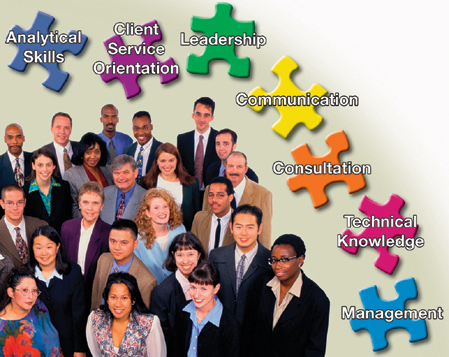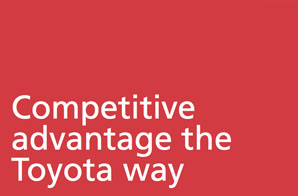 Core competence and competitive advantage
Core competence and competitive advantage
Core competency: Organizations with core competencies enjoy global leadership. It represents the organization’s will to harmonize their multiple resources and skills. It distinguishes the firm in a market place because of its products and service’s uniqueness and because they become difficult to imitate by others. In such an organization, all business strategies revolve around the core competency. Core competencies give a company one or more competitive advantages, in creating and delivering value to its customers in its chosen field. Organizations which believe in spending generously on research and development can and the ones which experiment and investigate the processes can develop core competency. Core competencies lead to the development of core products. Core products are not directly sold to end users; rather, they are used to build a larger number of end-user products. For example, let’s take the example of Honda’a expertise in engines. Honda was able to exploit its core competency to develop a variety of quality products from lawn mowers and snow blowers to trucks and automobiles. Honda can boast of its sharp and competitive engineer’s team who can be credited for its core competency. In another example, Microsoft has expertise in many IT based innovations where, for a variety of reasons, it is difficult for competitors to replicate or compete with Microsoft’s core competences in building software.
 The term was popularized by Hamal and Prahalad, back in 1990 in the Harvard Business Review. Peter Drucker was one of the first to mention it in 1964 when he focused on ‘strength analysis’. A core competency comprises of reliable processes, synergy with customers & suppliers, a patent, an industrial design, know-how, unique product development, a brand/s, marketing strategy, business strategy, supply chain etc.
The term was popularized by Hamal and Prahalad, back in 1990 in the Harvard Business Review. Peter Drucker was one of the first to mention it in 1964 when he focused on ‘strength analysis’. A core competency comprises of reliable processes, synergy with customers & suppliers, a patent, an industrial design, know-how, unique product development, a brand/s, marketing strategy, business strategy, supply chain etc.
Core competencies are a pack of skills and technologies that are very difficult or impossible to copy or match; skilled employees, tacit knowledge, organizational endowment, collective values, supreme technology, and organizational ethics culture – these are some features which add to the core competency of an organization. The primary reason for 3M’s success is its people. 3M has always motivated its employees to innovate, think different and progress in their relative careers. This company has been blessed with generations of imaginative, industrious employees in all parts of its enterprise, all around the world.
Globally leading organizations are realizing that one of the components of core competency is people. A study was conducted on three hundred and fifty-eight Managers across the Johnson & Johnson Consumer & Personal Care Group (JJC&PC Group) globally to assess if there are specific leadership traits and competencies that distinguish high performers from average performers. The company did not stop only at conducting a study, it designed and organized educational and developmental programs for its employees across different ranks globally, to familiarize employees with the concepts of emotional, social and relational competency, and to share strategic leadership process. These sessions also served as the launch for the newly enhanced leadership models. As usual many other organizations have already replicated them.
Companies with core competencies identify their key business processes, manage them centrally, and invest in them heavily, looking for a long-term payback.
Sony’s innovations have become part of mainstream culture, including: the first magnetic tape and tape recorder in 1950; the transistor radio in 1955; the world’s first all-transistor TV set in 1960; the world’s first color video cassette recorder in 1971; the Walkman personal stereo in 1979; the Compact Disc (CD) in 1982; the first 8mm camcorder in 1985; the Minidisc (MD) player in 1992; the PlayStation game system in 1995; Digital Mavica camera in 1997; Digital Versatile Disc (DVD) player in 1998; and the Network Walkman digital music player in 1999.
Today, Sony continues to fuel industry growth with the sales of innovative Sony products, as well as with the company’s convergence strategy. The company has never compromised on persistence in R&D.
 Back home, a cigarette manufacturing company ITC has got into a wide range of diversifications such hotels, processed foods, biscuits and greeting cards. How does ITC manage this unrelated diversification? Unrelated diversification will succeed only if it is based on the core competency of the firm. ITC has leveraged beautifully on its core competency of distribution, brand building capability and its strength of quality outsourcing.
Back home, a cigarette manufacturing company ITC has got into a wide range of diversifications such hotels, processed foods, biscuits and greeting cards. How does ITC manage this unrelated diversification? Unrelated diversification will succeed only if it is based on the core competency of the firm. ITC has leveraged beautifully on its core competency of distribution, brand building capability and its strength of quality outsourcing.
Core competencies take a long time to build and practice. Organizations which continue the practice with perseverance by adding accuracy and particular sets of skills succeed in building core competency. New sets of skills and newly acquired knowledge should be steadily spread in the organization to facilitate the processes.
Competitive advantage is a business strategy where companies find ways to differentiate themselves from their competitors to attract more business. Service-based industries, such as hospitality, banks, health care use competitive advantage strategies to gain an elevated position in the field. Usually competitive advantage is sought out of one or more functional advantages. Competitive advantages give a company an edge over its rivals and a capability to produce greater value for the firm and its shareholders. The more sustainable the competitive advantage, the more complex it is for competitors to offset the advantage.
There are two main types of competitive advantages: comparative advantage and differential advantage. Comparative advantage, or cost advantage, is a firm’s ability to produce a good or service at a lower cost than its competitors, which gives the firm the ability sell its goods or services at a lower price than its competitors or to generate a larger margin on sales. A differential advantage is created when a firm’s products or services differ from its competitors and are seen as better than a competitor’s products by customers. Today India can boast of comparatively younger, English speaking low cost labour as one of her competitive advantage. This factor has given boost to outsourcing business in India.
The sources of competitive advantage have their limited life. Therefore, businesses are engaged in a never ending search to find new angles of competitive advantages. It’s all about finding some way of differentiating products and services from the competitor’s offerings. The whole purpose of business strategy is to find new sources of competitive advantage. Wal-Mart’s success lies in their cost cutting. Wal-Mart’s most operational processes are carried out in China because of their labor costs are which are much lower than many countries in world.
 Toyota is Japan’s biggest car company and the second largest in the world after General Motors. The fundamental reason for Toyota’s success in the global marketplace is its competitive advantage which lies in its corporate philosophy, the set of rules and attitudes that govern the use of its resources. The Toyota philosophy is often called as the Toyota Production System. The system depends partly on human resources management policy that stimulates employee creativity and loyalty besides Toyota has also built a highly efficient network of suppliers and components manufacturers. Much of Toyota’s success in the world markets can be attributed directly to its competitive advantage of its policies in human resources management and supply-chain networks.
Toyota is Japan’s biggest car company and the second largest in the world after General Motors. The fundamental reason for Toyota’s success in the global marketplace is its competitive advantage which lies in its corporate philosophy, the set of rules and attitudes that govern the use of its resources. The Toyota philosophy is often called as the Toyota Production System. The system depends partly on human resources management policy that stimulates employee creativity and loyalty besides Toyota has also built a highly efficient network of suppliers and components manufacturers. Much of Toyota’s success in the world markets can be attributed directly to its competitive advantage of its policies in human resources management and supply-chain networks.
One of the competitive advantages Hindustan Unilever enjoys is its edge over competitors in procuring raw material at low cost. The company in past faced slow volume sales in categories such as soaps, laundry and tea, where rivals managed to gain market share through aggressive price cuts. But, HUL managed the price correction soon after sourcing more suppliers who offered the raw material at more competitive prices.
Warren Buffet the most successful investor of all times has always given importance to businesses with durable competitive advantage. He always relies on an extensive research-and-analysis. Buffet says that the global economy is complex and volatile, the economy and the stock market do not move in sync with it. The market discount mechanism moves instantly to incorporate news into the share price and last but not the least the returns of long-term equities cannot be matched anywhere else.
By “competitive advantage” Buffet meant a unique product or service that a business either makes or provides. Even if the employees can walk away from the business but they cannot take the business’s “competitive advantage” with them. Some examples of businesses with competitive advantage Buffet considers – are business’s brand names, for instance, Bell, Pizza Hut, Kentucky Fried Chicken or Wal-Mart. He gives importance to a business’s regional monopoly. We have plenty of brand names in India which enjoy regional monopoly such as Ghadi Detergent, Sasa washing powder, Wagh Bakari Chai, Sapat Chai, and Wai Wai noodles. The regional brands can afford to lose their micro focus from their markets. They have such a grip on their markets that national or international products need to spend tremendous resources to fight their regional counterparts. Buffet believes that durable competitive advantage companies can pass on their saving to their shareholders, and their investors.
When we think of best deal we think of Wall mart. Owing to its size it has enormous bargaining power with suppliers and sells at heavily discounted prices. They are low cost buyer and seller- Here the margins are traded for volumes; the advantage is buying at the cheapest price and selling at lowest prices to induce customers to its stores all over the world.
According to Hamel and Pralhad, the process of developing core competencies starts with the strategic intent of being a leader in the market by leveraging the resources. This thought of being a leader in the market is called strategic intentand it points at identifying various opportunity gaps.













































